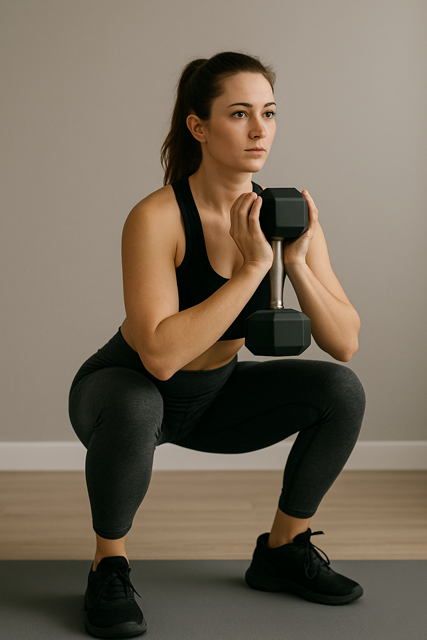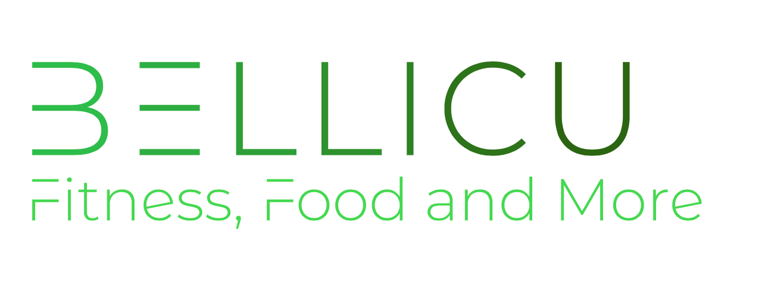

Beginner Strength Training Plan
Build Muscle with Just 3 Days a Week
Why a 3-Day Split Works for Beginners
You don’t need to live in the gym to build serious muscle. For beginners, consistency, proper form, and adequate recovery matter more than volume. That’s why a 3-day beginner strength training plan can deliver powerful results without overwhelming your schedule. Whether you're stepping into the gym for the first time or starting at home with dumbbells, this approach provides the perfect balance of effort and rest to stimulate muscle growth.
Training three times a week allows your muscles time to repair—a crucial component of hypertrophy (muscle building). It also helps you develop a habit you can sustain long-term, preventing burnout and reducing injury risk. In this guide, you'll get a complete 3-day split, tips for both home and gym settings, and recovery strategies to ensure progress. No fluff, just the essentials.
This isn’t about lifting every day or maxing out weekly. It’s about training smart, lifting with intention, and giving your body what it needs to grow. Let’s break down the ultimate beginner plan that respects your time and builds your strength.
The Principles Behind This Beginner Strength Training Plan
A smart training plan isn’t just about what exercises you do—it’s about why you do them. The structure of this 3-day program is built on science-backed principles that support safe, sustainable muscle growth for beginners.
Progressive Overload
Muscle doesn’t grow by accident—it grows in response to challenge. Progressive overload is the gradual increase of stress placed on your muscles, and it's the cornerstone of any effective strength training program.
For beginners, progress can be achieved in several ways:
Adding weight to your lifts each week (even just 2.5–5 lbs).
Increasing reps within a target rep range (e.g., moving from 10 to 12).
Improving tempo or control, such as slower eccentrics or paused reps.
Reducing rest times between sets to enhance intensity.
The goal is to ensure your body never becomes too comfortable. That said, progress doesn’t have to be fast—it just has to be consistent. Even small improvements week to week signal that your muscles are adapting and growing stronger.
Compound Movements First
When time is limited, compound exercises give you maximum return. These are multi-joint movements that engage several muscle groups at once. Think:
Squats (quads, glutes, core)
Push-ups/Bench Press (chest, shoulders, triceps)
Rows (back, biceps)
Overhead Presses (shoulders, upper back, core)
Starting your workouts with these movements not only builds more muscle faster, but also improves coordination, balance, and real-world strength. Plus, compound lifts burn more calories and elevate your heart rate—an added bonus if you’re also aiming for fat loss.
Isolation exercises (like curls or tricep extensions) have their place, but they come after the heavy hitters.
Recovery Is Training
This may surprise beginners: Muscle growth doesn’t happen while you’re lifting—it happens while you’re recovering. Every workout creates tiny micro-tears in your muscle fibers. It’s during rest that your body repairs and reinforces those fibers, making them stronger and thicker.
That’s why this plan uses a 3-day split with rest or active recovery in between sessions. It’s not about doing more, it’s about doing enough—and then letting your body do its job.
Neglecting recovery can lead to:
Plateaus in strength
Poor sleep and mood
Increased risk of injury
Burnout or demotivation
To support recovery, aim for:
7–9 hours of sleep per night
Nutrient-dense meals, especially protein and healthy carbs
Hydration (your muscles are ~75% water)
Optional mobility work on off days to stay limber and reduce soreness
Think of recovery as an equal partner to your workouts. Without it, you’re just breaking down muscle with no chance to build it back better.
New to These Exercises? Watch the Demos First
If you're unfamiliar with terms like “goblet squat” or “Romanian deadlift,” you’re not alone—and that’s perfectly normal for beginners. Understanding the movement is important, but seeing it in action is often the fastest way to learn.
That’s why we’ve made it easier for you:
✅ We’ve included trusted, high-quality example videos right under each training day.
These short tutorials show proper form, key technique tips, and safe execution—perfect for visual learners.
What to Look for in a Good Tutorial (if you search further)
While YouTube is full of fitness videos, not all are created equal. If you want to dig deeper, stick with:
Certified coaches (look for credentials like NASM, ACE, CSCS)
Clear, slow explanations with form breakdowns
Reputable channels like Jeff Nippard, Athlean-X, Mind Pump TV, or Bodyweight Warrior (for bodyweight alternatives)
🚫 Skip clickbait or flashy edits that sacrifice technique for entertainment.
💡 Tip:
If you're ever unsure about a movement, search for terms like:
“Goblet Squat for beginners”
“Romanian Deadlift with dumbbells”
“Incline Push-Up form cues”
Watching a proper demonstration builds confidence, reduces injury risk, and helps you make the most of every rep.
The 3-Day Beginner Strength Training Split
This full-body split is divided across three days: Push, Pull, and Legs/Core. It gives each major muscle group time to recover and grow.
Day 1 – Push (Chest, Shoulders, Triceps)


Tip: Start light. Focus on form before increasing load.
Video Tutorials (Chest, Shoulders, Triceps)
Dumbbell Bench Press
How To: Dumbbell Chest PressDumbbell Shoulder Press
Dumbbell Shoulder Press | Exercise GuideIncline Push-Up
How To Do An Incline Push UpTriceps Rope Pushdown
How To: Rope Push-Down
Day 2 – Pull (Back, Biceps)


Tip: Focus on slow, controlled reps to maximize tension on your muscles.
Video Tutorials (Back, Biceps)
Lat Pulldown
Beginner's Guide: Lat PulldownDumbbell Row
How to Perfect Your Dumbbell Row | Form Check | Men's HealthFace Pull
How to Do a Face Pull | Proper Form & Technique | NASMHammer Curl
How To: Dumbbell Hammer Curl
Day 3 – Legs + Core


Tip: Prioritize control and posture—especially on core exercises.
Video Tutorials (Legs + Core)


Goblet Squat
Gym vs. Home Workouts: Pick What Works for You
At the Gym
Access to machines makes progression easier.
Great for those who need external motivation or structure.
Use cables, barbells, and benches for variety.
At Home
Dumbbells and resistance bands are versatile and effective.
Zero commute means fewer excuses.
Bodyweight progressions still build strength if done properly.
Starter Equipment for Home:
Adjustable dumbbells (or fixed sets)
Resistance bands
A sturdy bench or step
Yoga mat for core work
Light movement on these days helps reduce stiffness, improves circulation, and prepares your body for the next session. Think of rest days as a necessary investment in your next PR—not a step backward.
💡 Tip: If you’re feeling unusually sore or fatigued, prioritize total rest and hydration. Your body might be asking for it.
Sleep & Muscle Repair
Sleep isn’t just for recharging mentally—it’s a biological recovery tool that directly impacts muscle growth. During deep sleep stages, your body releases growth hormone, which triggers muscle repair and fat metabolism.
Aim for:
7 to 9 hours of high-quality sleep every night
A consistent sleep schedule—even on weekends
A cool, dark, screen-free environment to improve deep sleep
Sleep deprivation has been shown to reduce protein synthesis, impair coordination, and increase hunger hormones like ghrelin—setting back both training and fat loss goals.
Fact: One bad night of sleep can reduce your workout performance by up to 20%.
Fuel Your Training
You don’t need a complicated meal plan or endless supplements. What you do need is consistent nutrition that supports your workouts, recovery, and muscle repair.
Here are the essentials:
1. Protein: Your Muscle-Building Foundation
Aim for 0.7–1g of protein per pound of body weight per day
Spread it across meals—20–30g per meal is ideal
Prioritize lean sources: chicken, fish, Greek yogurt, eggs, tofu, protein shakes
Protein provides the amino acids your body needs to rebuild muscle. Without enough, your body will struggle to recover—even if your workouts are on point.
2. Carbs = Fuel
Eat complex carbs like oats, rice, potatoes, fruits, and veggies
Have a pre-workout snack (30–60 mins before training) with carbs and a bit of protein for energy and focus
Carbs replenish glycogen, your muscles’ energy source. If you train on empty or low-carb for too long, performance and recovery will suffer.
3. Hydration Matters More Than You Think
Drink water throughout the day, not just during workouts
Add electrolytes (sodium, potassium, magnesium) if you’re sweating a lot, training in heat, or feeling sluggish
Even mild dehydration can reduce strength and endurance by 10–15%. Water is also key for nutrient transport and joint health.
✅ Simple Recovery Checklist:
☐ 7–9 hours of sleep
☐ 3+ meals with high protein
☐ Active recovery or stretching on off days
☐ 2+ liters of water daily
☐ Pre-workout carbs + post-workout protein
Recovery and Nutrition for Beginners
Muscle growth isn’t just about lifting weights—what you do outside the gym matters just as much. If your body doesn’t have the chance (or fuel) to recover properly, you’ll plateau fast. Here’s how beginners can build a recovery routine that supports real progress.
Rest Days Are Growth Days
One of the biggest mistakes beginners make? Skipping rest days—or feeling guilty about taking them. But the truth is, rest is where the gains happen. Strength training breaks down muscle tissue; recovery is when your body rebuilds it stronger.
This plan schedules workouts on Monday, Wednesday, and Friday, leaving Tuesday, Thursday, and the weekend open for:
Walking (low-intensity cardio that promotes blood flow and active recovery)
Stretching or foam rolling
Mobility work, like hip openers or shoulder dislocations


Common Beginner Mistakes (And How to Avoid Them)
Starting a new strength routine is exciting—but many beginners unknowingly fall into traps that can slow or even reverse their progress. Here’s what to watch out for and how to correct course early.
Skipping Warm-Ups
Warm-ups aren’t optional—they’re essential. Jumping straight into heavy lifts with cold muscles increases your risk of strains, poor range of motion, and sluggish performance.
Instead, start with:
5–10 minutes of light cardio (e.g., brisk walking, jump rope, cycling)
Dynamic stretches or bodyweight movements specific to your workout (e.g., arm circles before pressing, bodyweight squats before leg day)
These movements increase blood flow, elevate your core temperature, and “wake up” your nervous system for better movement and focus.
Ego Lifting
It’s tempting to go heavy, fast—especially when you see others moving big weights. But sacrificing form to lift more is a fast track to injury and plateau.
Here’s what ego lifting looks like:
Using momentum instead of controlled movement
Half reps or poor range of motion
Rounded back during deadlifts or collapsing knees during squats
Train with intention, not with pride. Master your technique with moderate weight before increasing the load. Remember: strength gains built on proper form are sustainable.
Training Too Often
More isn’t always better. Beginners often believe that daily workouts equal faster results—but in reality, overtraining without recovery can stall muscle growth and lead to fatigue or burnout.
This 3-day plan is designed to optimize gains by balancing work and recovery. Trust the process. Give your muscles 48–72 hours to recover between sessions, especially in the early stages.
If you feel like doing more, focus on active recovery (walking, stretching, mobility)—not more lifting.
Neglecting Nutrition
You can’t out-train poor nutrition. Without adequate fuel—especially protein—your muscles won’t repair or grow efficiently.
Common beginner errors:
Skipping meals or under-eating
Consuming too little protein
Fearing carbs (which are essential for energy)
Make your meals simple but purposeful. A protein shake after workouts, balanced meals throughout the day, and hydration all play a direct role in your results. Think of food as part of your training—not separate from it.
When to Progress from This Plan
You’ve stuck with the plan. You’re lifting consistently. You feel stronger. Now what?
This 3-day beginner strength training plan can serve you well for 8–12 weeks. During this time, you’re building foundational strength, learning form, and adapting your body to regular training. But eventually, you'll need a new challenge.
Signs It’s Time to Move On
You’re completing every set and rep with ease, and still have energy left in the tank
You rarely feel muscle soreness the day after lifting (not mandatory, but a sign of insufficient challenge)
Your strength gains have stalled for 2–3 weeks despite consistent effort and good nutrition
You’re mentally ready for more volume, complexity, or frequency
Next Steps in Your Strength Journey
If you’re hitting those benchmarks, consider one or more of the following upgrades:
✅ Move to a 4-Day Split
Add a fourth training day with a specific focus, such as:
Upper/lower body splits
Push/pull/legs + accessory day
Strength + hypertrophy blend
This increases total weekly volume while giving each muscle group more attention.
✅ Introduce Heavier Compound Lifts
Start working with barbells if you haven’t already:
Barbell back squats
Deadlifts
Barbell bench press
Barbell overhead press
Heavier loads engage your nervous system differently and allow for more efficient strength development.
✅ Increase Volume or Intensity
You can challenge your muscles in more ways than just adding weight:
Add extra sets or reps
Use advanced techniques like drop sets, supersets, or tempo variations
Shorten rest intervals to increase metabolic demand
Tip: Don’t upgrade everything at once. Pick one progression (e.g., heavier weights or a new split) and give your body time to adjust.
Final Thoughts: Strength Training Starts Here
There’s a common misconception that building muscle requires daily gym sessions, complicated programs, or expensive equipment. The truth? You can make incredible progress with a simple, consistent plan like this 3-day split—especially if you’re new to strength training.
This program focuses on what actually works:
Compound movements that target major muscle groups
Progressive overload to ensure you keep getting stronger
Rest and recovery, which are often overlooked but absolutely essential
Balanced nutrition and sleep, because muscle growth happens outside the gym too
You don’t need perfection. You don’t need to hit personal records every week. What you do need is to show up, follow the plan, and give your body time to adapt. Progress in strength training doesn’t happen overnight—but with consistency, it does happen.
Even three sessions a week, done with intention and effort, can dramatically improve your strength, confidence, posture, and overall health. In a few months, you’ll be amazed at how far you’ve come—not just physically, but mentally too.
So if you’re still wondering whether this plan is “enough,” remember: it’s not about doing more—it’s about doing what matters, well. The most successful beginners aren’t the ones who train the most, but the ones who stick with it the longest.
References
1. Progressive Resistance Training and Muscle Strength
Study: Effects of Resistance Training on Muscle Size and Strength in Very Elderly Individuals
Source: PubMed (2020)
Link: https://pubmed.ncbi.nlm.nih.gov/32740889/
Summary: This meta-analysis demonstrates that resistance training significantly enhances muscle strength and size, even in individuals aged 75 and older.
2. Compound vs. Isolation Exercises
Study: Single vs. Multi-Joint Resistance Exercises: Effects on Muscle Strength and Hypertrophy
Source: PubMed Central (2015)
Link: https://www.ncbi.nlm.nih.gov/pmc/articles/PMC4592763/
Summary: The study suggests that both single-joint and multi-joint exercises are effective for increasing muscle strength and size, with multi-joint exercises offering time-efficient benefits.
3. Role of Satellite Cells in Muscle Hypertrophy
Study: The Role of Satellite Cells in Muscle Hypertrophy
Source: PubMed (2014)
Link: https://pubmed.ncbi.nlm.nih.gov/24505026/
Summary: This review discusses how satellite cells contribute to muscle repair and growth, highlighting their activation during resistance training.
4. Sleep and Athletic Recovery
Study: Sleep Hygiene for Optimizing Recovery in Athletes
Source: PubMed (2019)
Link: https://pubmed.ncbi.nlm.nih.gov/31288293/
Summary: The article emphasizes the critical role of sleep in athletic performance and recovery, noting that sleep deprivation can impair strength and endurance.
5. Protein Supplementation and Muscle Gains
Study: A Systematic Review, Meta-Analysis, and Meta-Regression of the Effect of Protein Supplementation on Resistance Training-Induced Gains in Muscle Mass and Strength in Healthy Adults
Source: British Journal of Sports Medicine (2018)
Link: https://bjsm.bmj.com/content/52/6/376.abstract
Summary: Findings indicate that protein supplementation significantly enhances muscle mass and strength gains during resistance training, with optimal benefits observed at intakes around 1.6 g/kg/day.
6. Understanding Overtraining Syndrome
Study: Overtraining Syndrome: A Practical Guide
Source: PubMed Central (2012)
Link: https://www.ncbi.nlm.nih.gov/pmc/articles/PMC3435910/
Summary: This guide outlines the symptoms and management of overtraining syndrome, stressing the importance of adequate rest and recovery in training programs.
